
 Data Structure
Data Structure Networking
Networking RDBMS
RDBMS Operating System
Operating System Java
Java MS Excel
MS Excel iOS
iOS HTML
HTML CSS
CSS Android
Android Python
Python C Programming
C Programming C++
C++ C#
C# MongoDB
MongoDB MySQL
MySQL Javascript
Javascript PHP
PHP
- Selected Reading
- UPSC IAS Exams Notes
- Developer's Best Practices
- Questions and Answers
- Effective Resume Writing
- HR Interview Questions
- Computer Glossary
- Who is Who
Area
Introduction
Area is the space occupied by a figure. Polygons are the two-dimensional shape which has plane closed figures made of the line segments. Based on the number of sides each name of the polygon varies such as, triangles, quadrilateral, etc. The circle and ellipse are closed two dimensional shapes that have no sides. Area is a two-dimensional measurement that represents the amount of space covered by a two-dimensional shape.
Area
Area is the space inside a 2D shape. To measure the area of polygons, when the figure is in the grid, we can use unit squares. By counting the total number of unit squares in the grid we can calculate the area of that shape. When the two-dimensional figure is not in the grid, we need to know their length and breadth to find its area. To find the area of a circle, it is divided into sectors.
Area of 2D shapes
For closed two dimensional shapes we can find an area using square grids. When the 2-dimensional figure is not in the grid and the side, length or breadth is known we can find the areas
Area of triangles
A triangle has 3 types of triangles based on angles 3 types based on sides. The formula for types of triangles is given in the table.
| Type | Image | Formula |
|---|---|---|
| Right angled triangle | 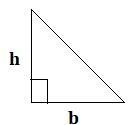 |
$$\mathrm{Area =\frac{1}{2}(base à height)}$$ |
| Equilateral triangle or equiangular | 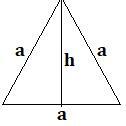 |
$$\mathrm{Area = \frac{\sqrt{3}}{4} a^2\: or\: 0.433 \: a^2}$$ where a = side |
| Isosceles triangle |  |
$$\mathrm{Area =\frac{1}{2}(base à height)}$$ |
| Scalene triangle,obtuse angled and acute angled triangle | 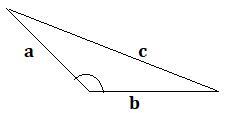 |
$$\mathrm{Area = \sqrt{s(s-a)(s-b)(s-c)}}$$ where $\mathrm{s =\frac{a+b+c}{2}}$ |
Area of quadrilaterals
| Types | Image | Formula |
|---|---|---|
| Square | 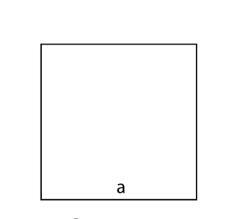 |
Area = a2 where a = side |
| Rectangle | 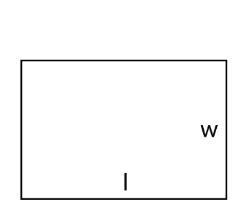 |
Area = length à width |
| Parallelogram | 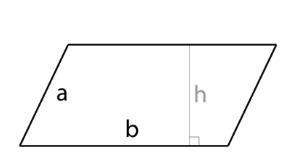 |
Area = breadth à height |
| Rhombus | 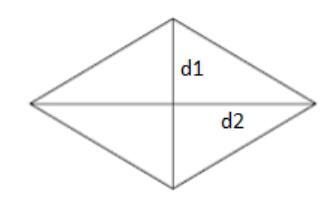 |
Area =$\mathrm{\frac{1}{2}(d_1Ãd_2)}$ where d1 & d2 are diagonals |
| Trapezium | 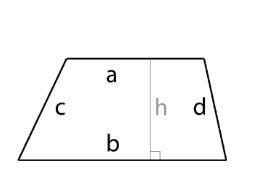 |
$\mathrm{Area =\frac{1}{2} (a+b)h}$ where a $\&$ b are parallel sides and h is height |
| Quadrilateral | 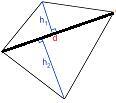 |
$$\mathrm{Area =\frac{1}{2} d(h_1+h_2)}$$ where d = diagonal |
Area of polygon
A polygon can be of any number of sides more than three.
To find the area of a polygon, you can split the polygon into a number of triangles and quadrilaterals.
Find the area of each shape and add together to get the area of a polygon.
Area of a circle and ellipse
To find the area of the circle, we need to divide the circle into equal parts each measuring equal degrees called sectors. Now we can arrange each sector to form a rectangle. We know,
$$\mathrm{Area\: of\: a\: circle = Area\: of\: a\: rectangle = l à b}$$
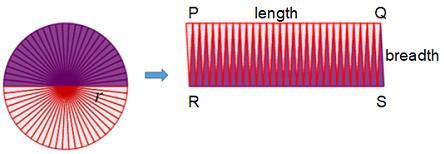
The length PQ covers half the circumference of the circle
$$\mathrm{where\: PQ =\frac{1}{2} circumference\: of\: the\: circle}$$
and the breadth QS covers the radius of the circle.
$$\mathrm{Area\: of\: a\: circle = \frac{1}{2}circumference à radius.}$$
we know circumference of a circle = 2?r
$$\mathrm{Area of a circle = \frac{1}{2}(2?r) Ã r = ?r^2}$$
Now to find the area of an ellipse,
Ellipse is formed by stretching and shrinking the radius of the circle.
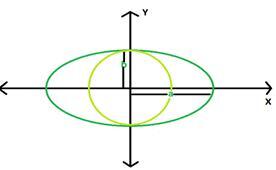
$$\mathrm{Area\: of\: circle = Area\: of\: an\: ellipse }$$
$$\mathrm{? ÃrÃr = ?ÃaÃb }$$
where a is the length of the semi major axis and b is the length of the semi minor axis.
Solved example
1)Find the area of a triangle when base = 4cm and height = 5cm
Answer:
$$\mathrm{Area =\frac{1}{2}(base à height)}$$
$$\mathrm{Area = \frac{1}{2}(4 Ã 5) = \frac{1}{2}(20)}$$
$$\mathrm{Area = 10 cm^2}$$
2)Find the area of equilateral triangle when a = 2cm
Answer :
$$\mathrm{Area = \frac{?3}{4} a^2}$$
$$\mathrm{Area = \frac{?3}{4} 2^2}$$
$$\mathrm{= ?3\: or\: 1.732cm^2}$$
3) Find the area of a triangle when a = 3cm, b = 6cm and c = 7cm.
Answer:
When each side of a triangle has a different length. we can apply heron's formula, first find semi perimeter,
$$\mathrm{s =\frac{a+b+c}{2} =\frac{3+6+7}{2} = \frac{16}{2} = 8 }$$
Now to find the area of a triangle we get,
$$\mathrm{Area = \sqrt{s(s-a)(s-b)(s-c)}}$$
$$\mathrm{Area = \sqrt{8(8-3)(8-6)(8-7)}}$$
$$\mathrm{=\sqrt{80}}$$
4)Find the area of a parallelogram when base = 12cm and height = 11cm
Answer:
$$\mathrm{Area = breadth à height }$$
$$\mathrm{Area = 12 Ã11 = 121 cm^2}$$
5)The perimeter of a rhombus is 20. If the length of one of the diagonals is 8, what is the area of a rhombus?
Answer:
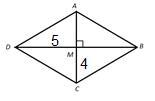
Perimeter is the sum of 4 sides of a rhombus,
$$\mathrm{20 = 4 s}$$
$$\mathrm{s = \frac{20}{4} = 5}$$
To find the other diagonal from the known values, we can consider a rhombus into 4 triangles.
$$\mathrm{a = \frac{1}{2} (diagonal) = \frac{1}{2} (8) = 4}$$
One of the triangles has 2 known sides by using Pythagoras theorem we have,
$$\mathrm{ c^2 = a^2+ b^2}$$
$$\mathrm{5^2 = 4^2+ b^2}$$
$$\mathrm{ b = 3 }$$
Hence diagonal d2 = 3 Ã 2 = 6 and d2 = 8
Now to find the area of rhombus,
$$\mathrm{Area =\frac{1}{2}(d_1Ãd_2)}$$
$$\mathrm{Area =\frac{1}{2}(8Ã6)}$$
$$\mathrm{= 24cm^2}$$
6)Find the area of given quadrilateral ABCD
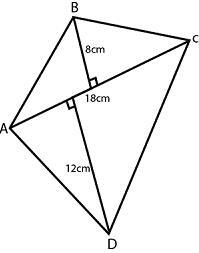
Answer: Given, d = 18cm, h1 = 8cm and h2= 12cm
$$\mathrm{Area = \frac{1}{2} d(h_1+h_2)}$$
$$\mathrm{=\frac{1}{2} 18(8+12)}$$
$$\mathrm{= 180 cm^2}$$
7)Find the area of an ellipse if its major axis = 10cm and minor axis = 6cm.
Answer:
$$\mathrm{a =\frac{1}{2}(10) = 5cm}$$
$$\mathrm{b =\frac{1}{2}(6) = 3cm }$$
$$\mathrm{Area\: of\: an\: ellipse = ?ÃaÃb}$$
$$\mathrm{= ?Ã5Ã3 }$$
$$\mathrm{= 15?\: or\: 47.12\: cm^2 }$$
Conclusion
Two dimensional shapes have length, breadth or height or radius. To find the area of two-dimensional shapes such as triangle, quadrilaterals, polygon, circle and ellipse we can use the given measurements and apply the formulas. In a triangle if only two sides are given, we can use Pythagoras theorem to find the other side. Area of the circle and ellipse are measured based on the radius.
FAQs
1. What is a sector in a circle?
When a circle is divided into parts it is called sector, each sector has two radii and one arc in it. Each arc lies in the circumference of the circle.
2. How to derive the formula for the area of a quadrilateral?
Consider a quadrilateral PQRS with diagonal that makes two triangles ?PQR & ? RSQ in it. Draw a perpendicular line PE and SF which is the height of the triangle.
$$\mathrm{Area\: of\: quadrilateral = ?PQR + ?RSP}$$
$$\mathrm{Area =\frac{1}{2}(diagonal à h_1) +\frac{1}{2}(diagonal à h_2) =\frac{1}{2} d( h_1+ h_2)}$$
3. Which formula can be applied to all types of triangles?
When the sides of the triangles are given. Heron's formula can be applied to all the types of triangles such as scalene, acute and obtuse angled triangle
4. How can the perimeter be found in polygons?
To find the perimeter of any polygon such as triangle, quadrilateral, etc. we can add all the sides together.
5. What is the three-dimensional form of the area?
To find the space occupied by a two-dimensional object we can use the area formula. The three-dimensional form of area is volume of the 3 D shape.

